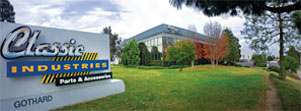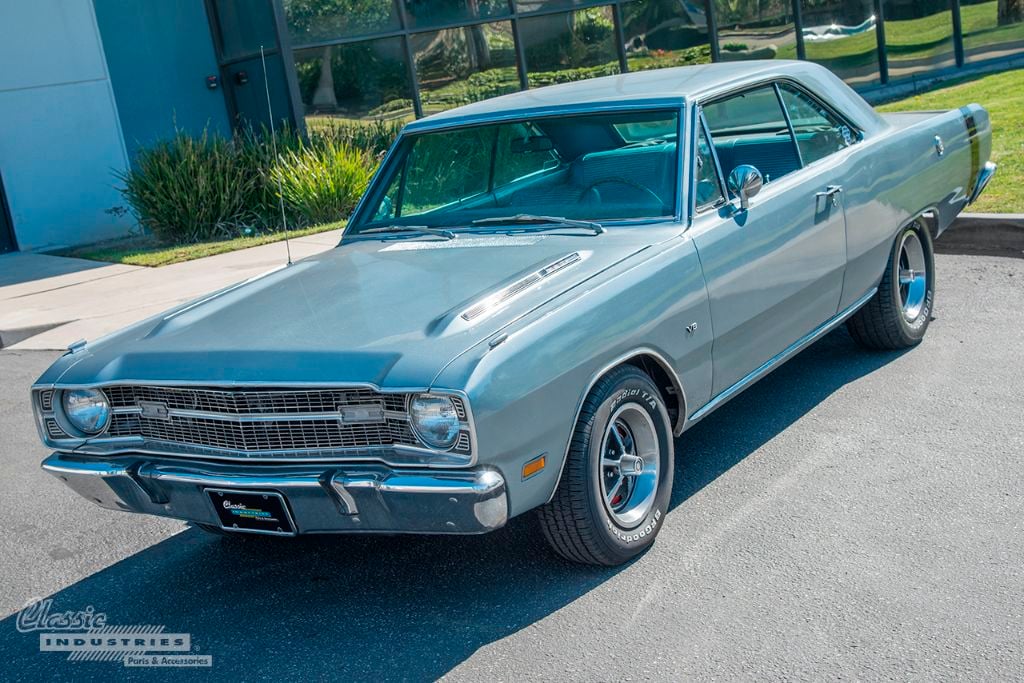
Although many of the most well-known classic cars are full-size vehicles, American automakers have made some great compact cars as well. The Dodge Dart is one prominent example of this fact. This model, which was built on the Mopar A-Body platform from 1963 through 1976, offered a range of configurations from practical six-cylinder commuters to potent V8 muscle cars. Today, we'll take a look back at each step in the evolution of Dodge Dart history from '63 to '76.
Dodge Dart History
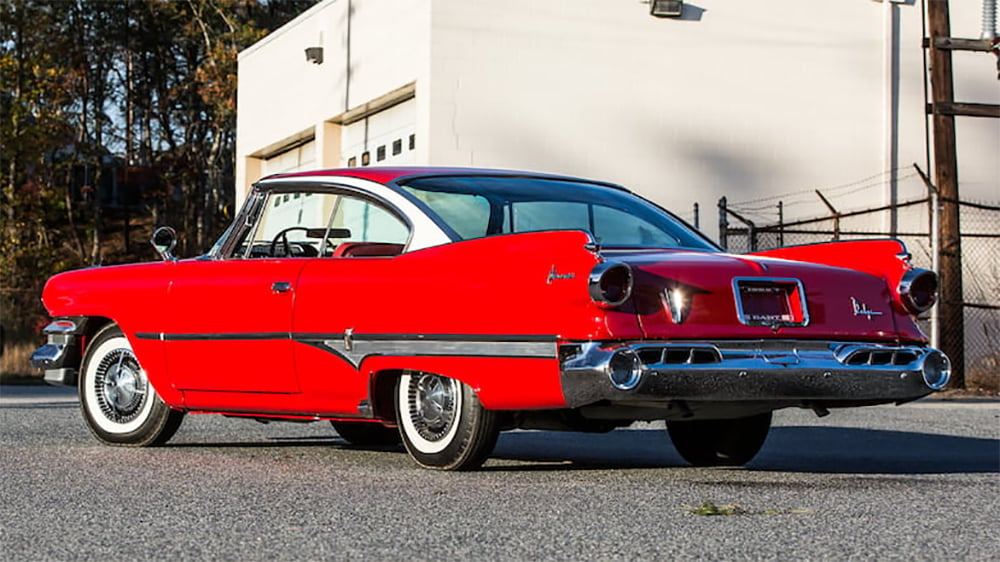
Above: 1960 Dodge Dart photo courtesy of Mecum
The Early Years
Before it moved to the A-body platform in 1963, the Dodge Dart began as a full-size model in 1959. It would remain a full-size vehicle until 1961. Dodge's sibling brand Plymouth introduced the Valiant in 1959 as a 1960 compact car model, and it became an immediate success. This led Dodge to introduce its own compact car based on the Valiant, the Dodge Lancer, which was available in 1961 and 1962. In 1963, the Lancer was replaced by a new intermediate-size compact car that carried over the previously successful Dart name. This was the beginning of the A-Body Dart that we now know and love.
1963-76 Dodge Dart History
1963 Dodge Dart
For 1963, the Lancer was replaced by a larger, intermediate size compact that carried over the previously successful Dart name. Offerings for this model included new convertibles in midrange Dart 270 and bucket-seat GT trims. Rounding out the models were 270 and base 170 two- and four-door sedans and four-door wagons. The 1963 Dart (convertible pictured below) is an oddball in this generation, and has many components that are one-year-only, including its back glass, windshield trim, and a one-year firewall that will not easily accept a V8. It was thus only available with 170ci and 225ci Slant Sixes. Transmissions were the A-904 Torqueflite and a three-speed manual. The A-904 was shifted via push buttons on the dash.
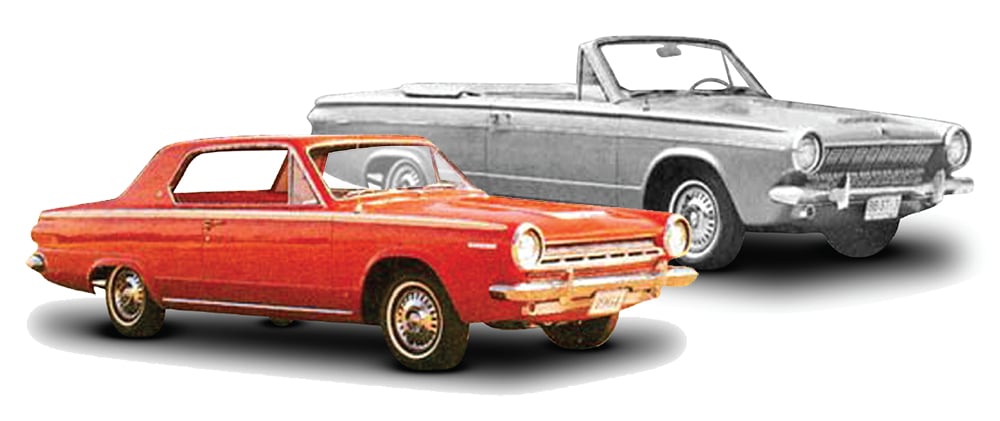
1964 Dodge Dart
The 1964 Dart (red hardtop pictured above) looked similar to the 1963 version, with the most obvious change being the convex grill. This year was the 50th anniversary for Dodge and all models were marked as such. The 1964 model was blessed with the new 273 V8, which also included a new firewall to clear the engine. The slant sixes continued unchanged. The three-speed manual and push-button Torqueflite were joined by a new four-speed manual transmission called the A-833. It was shifted via a chrome Hurst shifter.
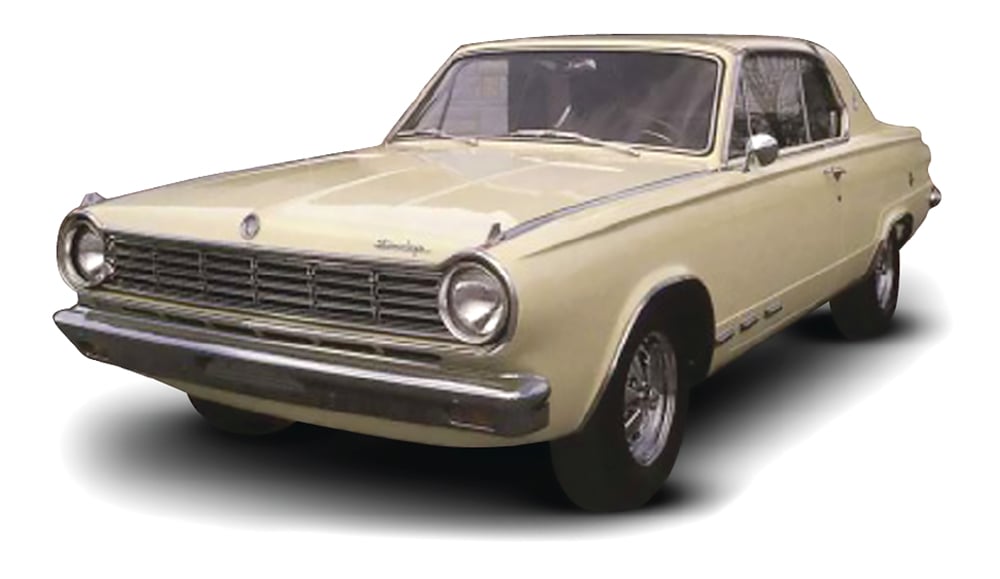
1965-66 Dodge Dart
1965 Dart was given a minor face lift with a new front clip and oval tail lamps. A hotter 273ci 4-bbl V8 was added to the list of engines. Transmissions remained unchanged, but the automatics were now shifted with a lever, either on the column or the floor. A rare special edition, the Dart Charger, combined the 273ci 4-bbl V8, heavy duty suspension, mag wheels, special badges, and a special soft yellow exterior color. The 1966 model was given another new front clip, squared off to mimic the new Charger. The only change to the front suspension in 1966 was the addition of an optional, small front sway bar. The GT models got new bucket seats with a vinyl-covered metal back and a full-length console.
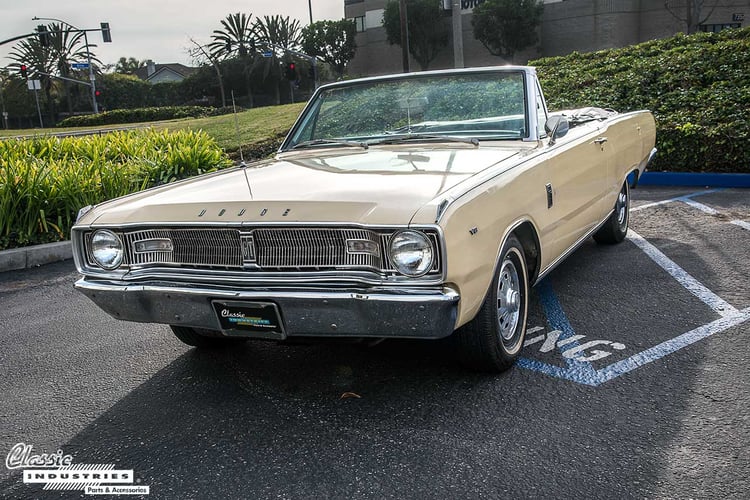
1967-69 Dodge Dart
The 1967 Dart (convertible pictured above) was a completely new model from the previous generation. All new sheet metal and styling was featured this year. The optional vinyl roof was a popular option for buyers. Underneath the new exterior were five optional power plants ranging from small six-cylinders to the very rare 383ci big-block-powered Dart GT. Owners who opted for the GT or rallye suspension received heavy duty shocks, stiffer springs and torsion bars, front disc brakes, and upgraded tires on 14" wheels.
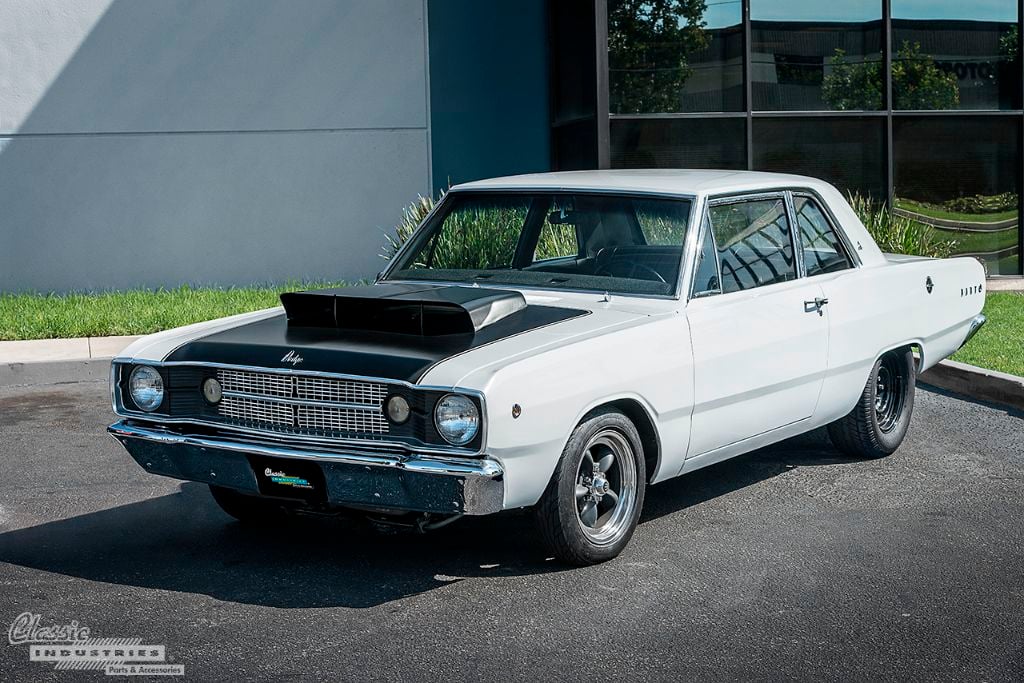
Although the 1968 (modified example pictured above) gained modest styling differences, there were big changes under the hood. Though the 170ci and 225ci sixes remained, the new 318ci LA V8 and 340ci LA V8 were offered in Darts. In addition, the 383ci big block returned under the hood of the Dart. There were now four Dart trim lines: Dart, 270, GT, and the top-line GTS.
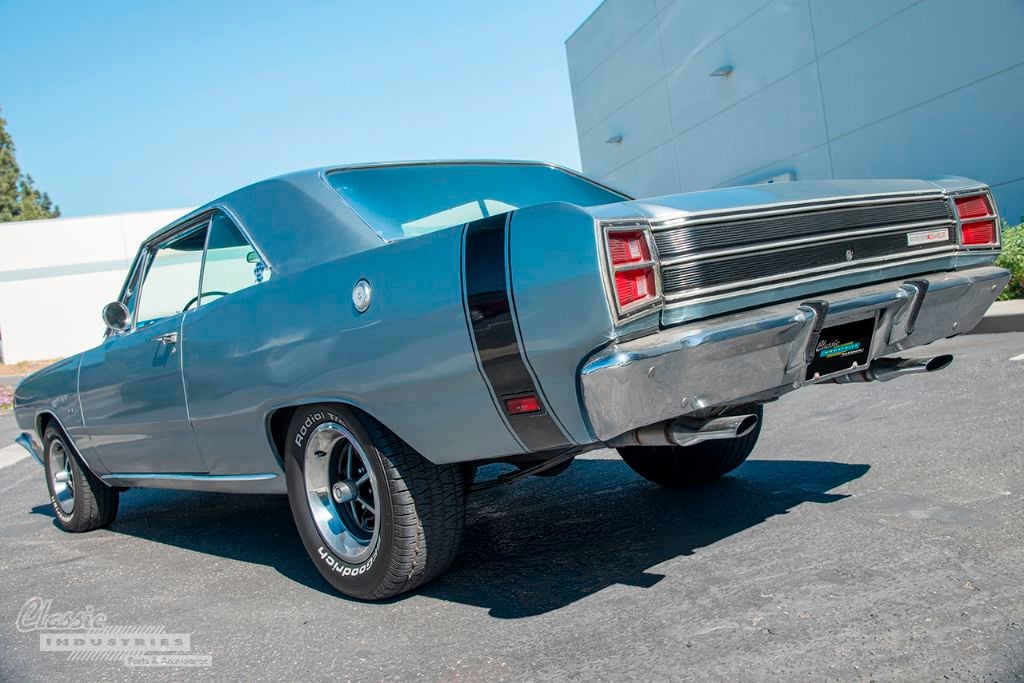
The 1969 Dart (GT model pictured above) featured a few subtle styling changes. The grill now formed a subtle arrow-like point at the center. The three-pod tail lamp unit became a two-pod unit. The 270 trim level was dropped, but the line gained the Custom, Swinger, and Swinger 340 models.
1970-72 Dodge Dart
The Dart was totally refreshed for 1970 with front and rear design changes to bring the car closer to the design themes found in Dodge’s full-size vehicles. This was achieved through grill and contour changes. In the rear, the Dart’s new rectangular tail lamps were set into a wedge-shaped rear bumper. The Dart convertible was discontinued along with the optional 383ci big block, leaving the 340 4-bbl as the top Dart engine.
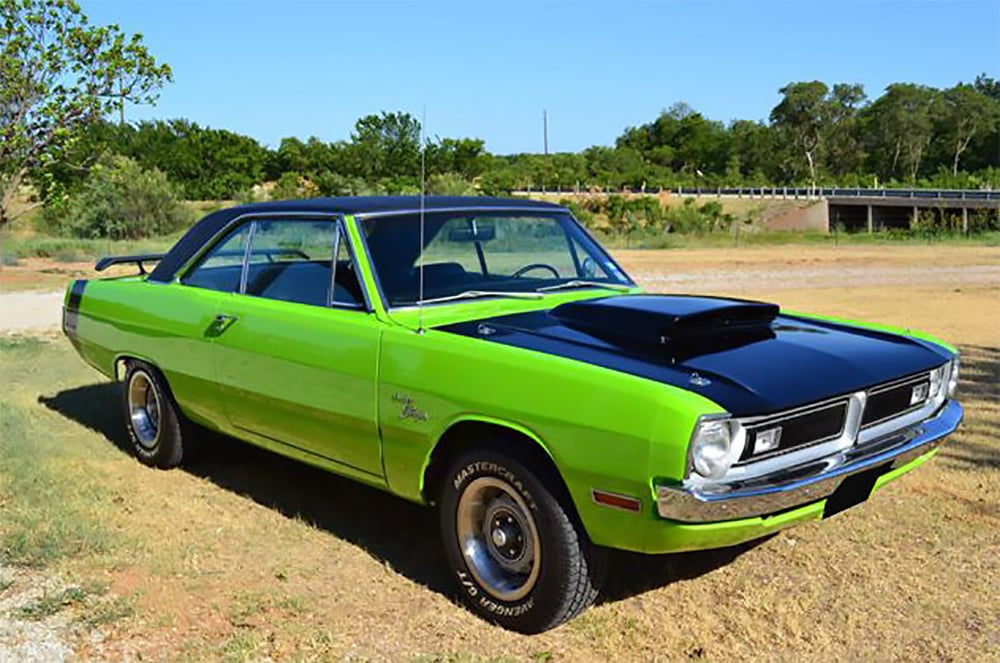
Above: 1971 Dart resto-mod photo courtesy of Mecum
The 1971 Dart received new smaller quad tail lamps that would be used through 1973. The Swinger 340 was replaced in 1971 by the Demon 340. Changes for 1972 included a revised grill without the central divider of the 1970-71 item, new surface-mounted side marker lamps rather than the previous flush-mount units, a new instrument cluster featuring a large rectangular speedometer, and the AM/FM radio option returned to the Dart line.
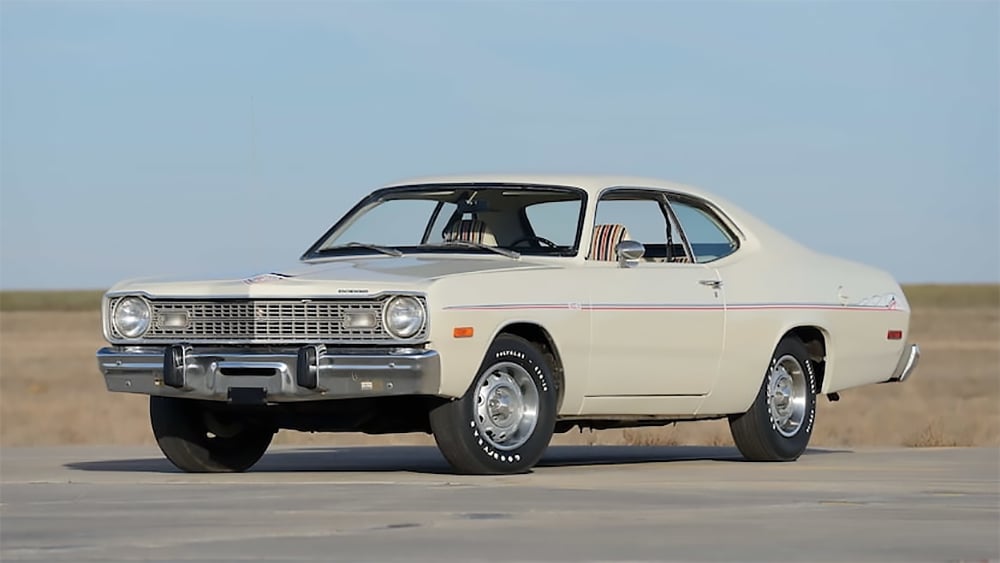
Above: 1974 Dart "Hang 10" special edition photo courtesy of Mecum
1973-76 Dodge Dart
The 1973 Dart received new front styling with revised fenders, grill, header panel, and hood. Massive front bumpers were installed to comply with new federal regulations. New single-piston disc brakes replaced the more complex 4-piston units offered from 1965-1972. Minor exterior changes were made between 1974 and 1976, but no major changes were made until the Dart line was retired after the 1976 model year.
The Dodge Demon & Dart Sport
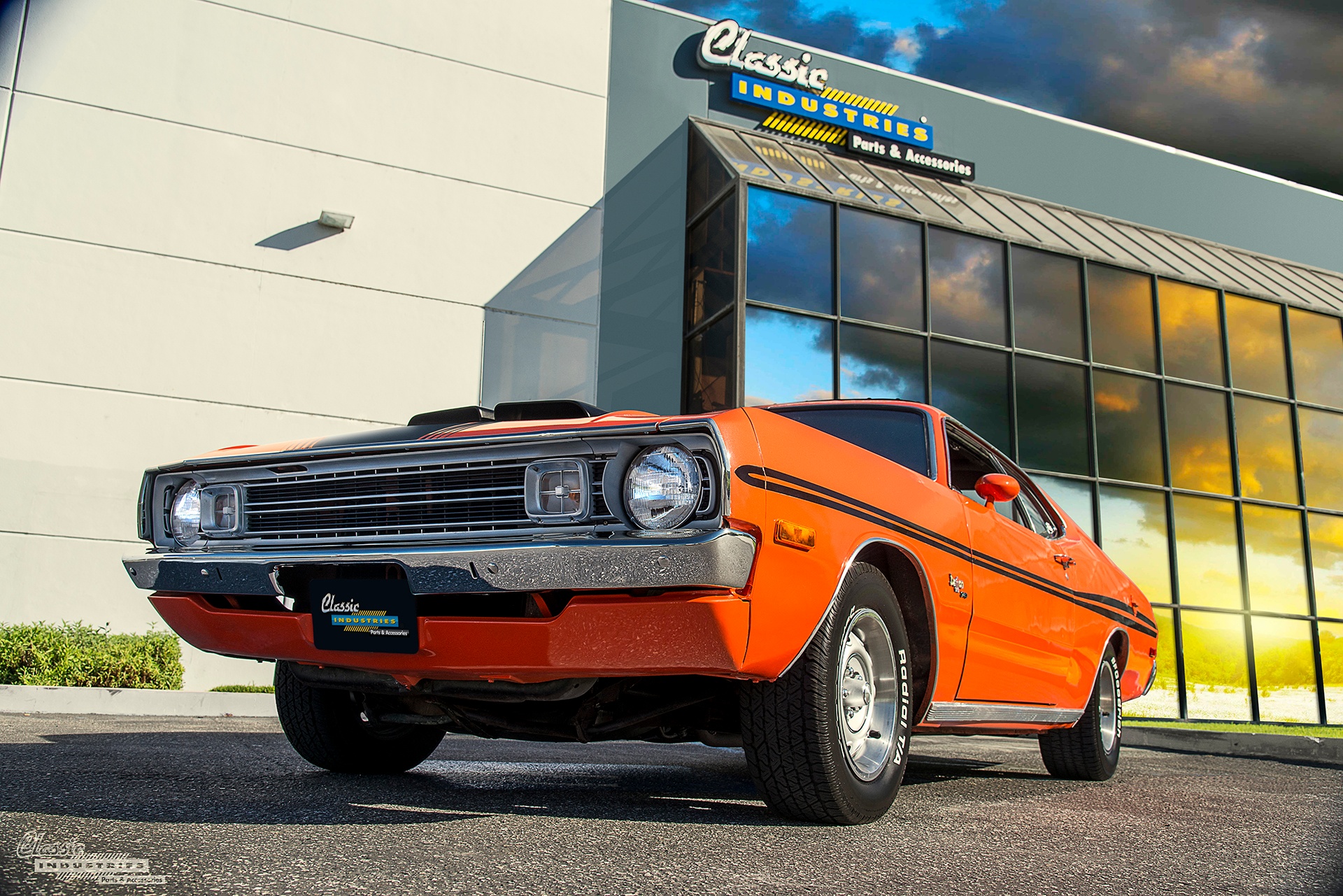
1971-72 Dodge Demon
In 1971, Dodge gained a version of Plymouth’s popular Valiant-based fastback Duster. Named the Dodge Demon and with optional dual hood scoops and a hood blackout treatment, the car was advertised and sold as a high-performance Mopar. The Demon’s Dart-style front fender wheel lips and Duster-style rear fender wheel lips reveal the car was essentially a Duster with Dart front sheetmetal and other minor styling changes. Two versions were available: Demon, which carried the 225ci Slant Six or the 318ci LA V8, and Demon 340, which housed the 340ci LA V8.

The Demon is characterized by its flush-mount six-window tail lamps, its Dart-style grill, and the Devil caricature that rode on the tail panel and the fenders of 1971 models. For 1972, the Demon’s grill was revised like the Dart grill. The Demon 340 model remained, but the 340ci V8 was severely detuned.
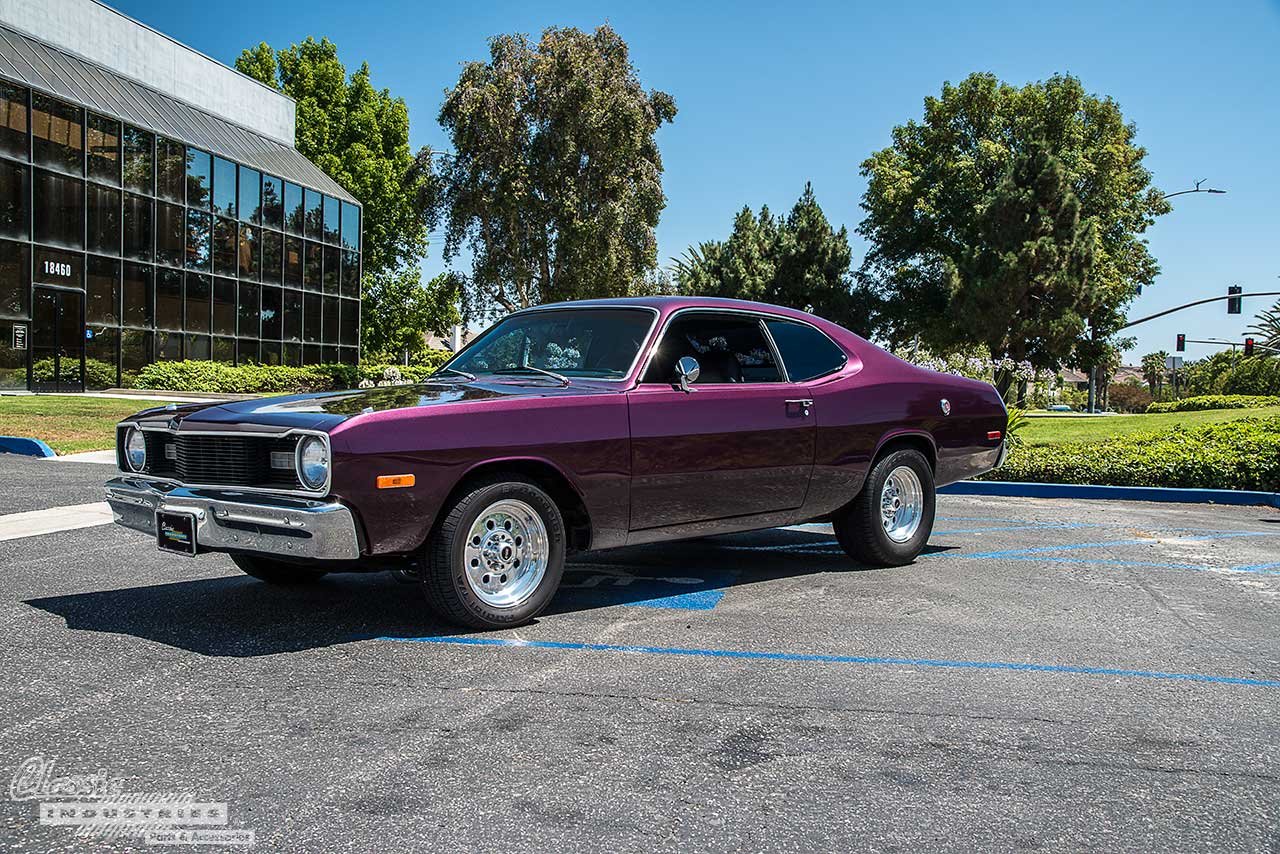
1973-76 Dodge Dart Sport
In 1973 the Demon fastback was renamed Dart Sport in response to complaints about the “Demon” name and devil-with-pitchfork logo. The high performance models thus became the Dart Sport 340 in 1973 and the Dart Sport 360 for 1974 when the 360ci LA V8 replaced the 340 V8. 1973 saw styling changes to go along with the name change on the Duster-bodied car. The Dart Sport received the same new front end as the other Darts and its tail lamps were changed to two lamps per side, each with a chrome trim ring. These would remain unchanged through the 1976 model year. Interesting fact: 1973-76 Dart Sport models wore the same exact hood as 1969 Plymouth Barracuda models.
Dodge Dart Restoration Parts
If you're looking for parts to restore, resto-mod, or hot-rod your classic Dodge Dart, look no further than Classic Industries. Our web store has thousands of Dart parts to choose from. We also offer a full-color Mopar restoration parts catalog that contains parts and accessories for many A, B, and E-Body Mopar cars. Click the button below to get a free Classic Industries Mopar parts catalog now.




